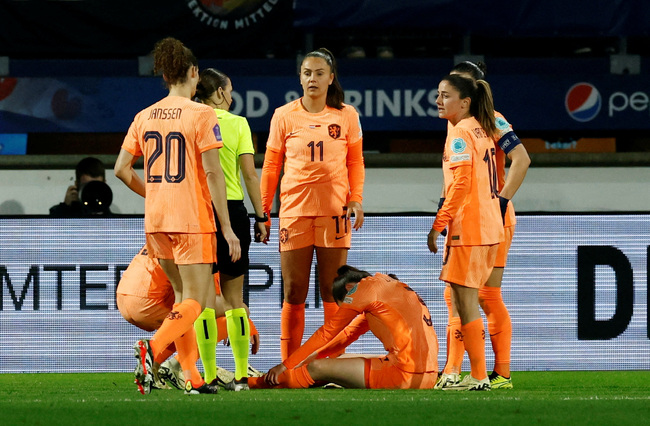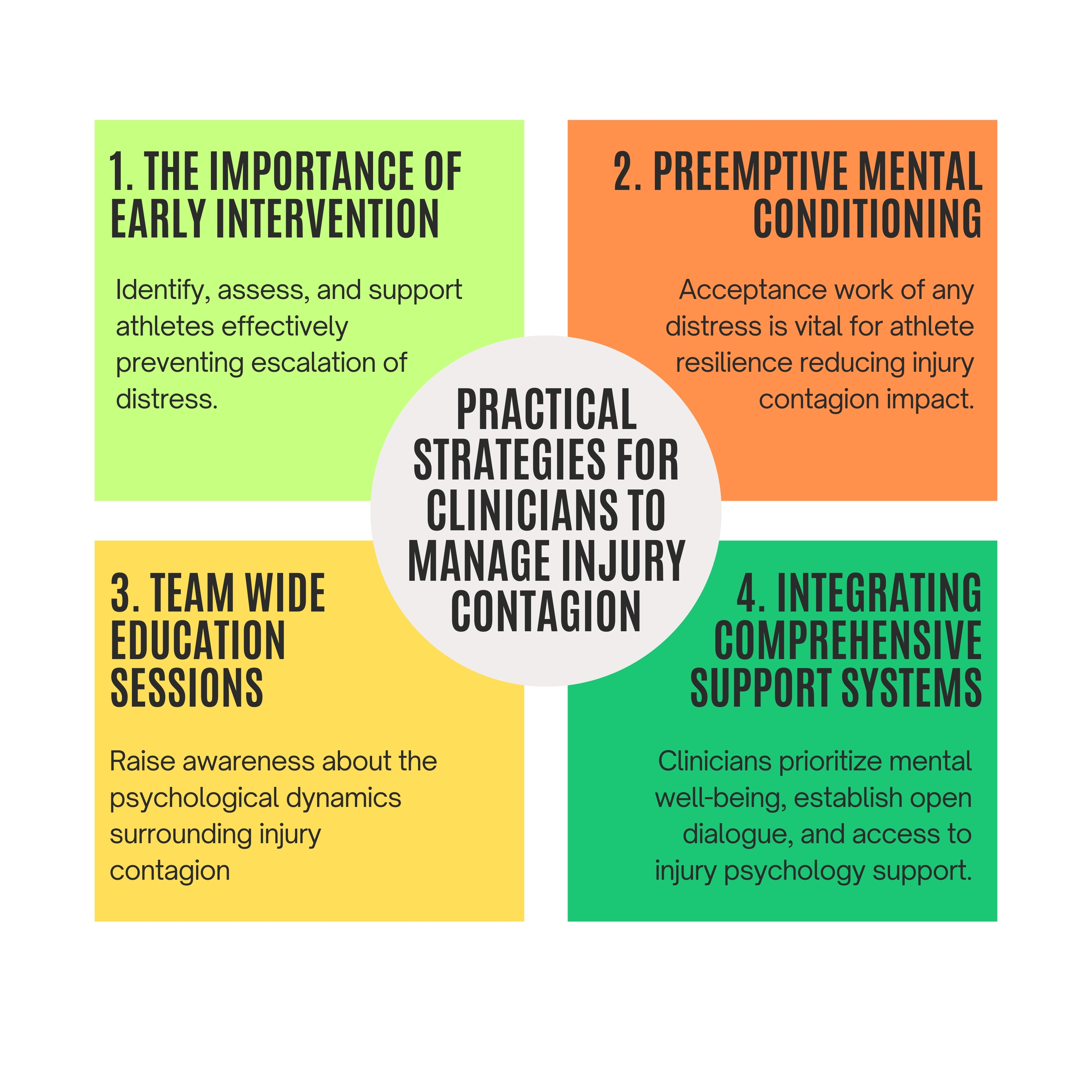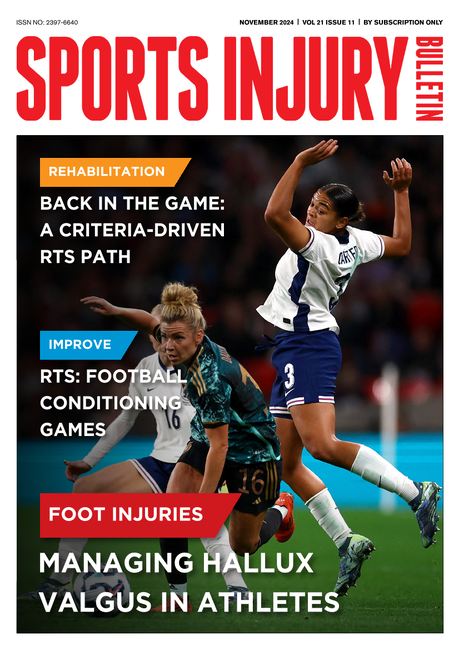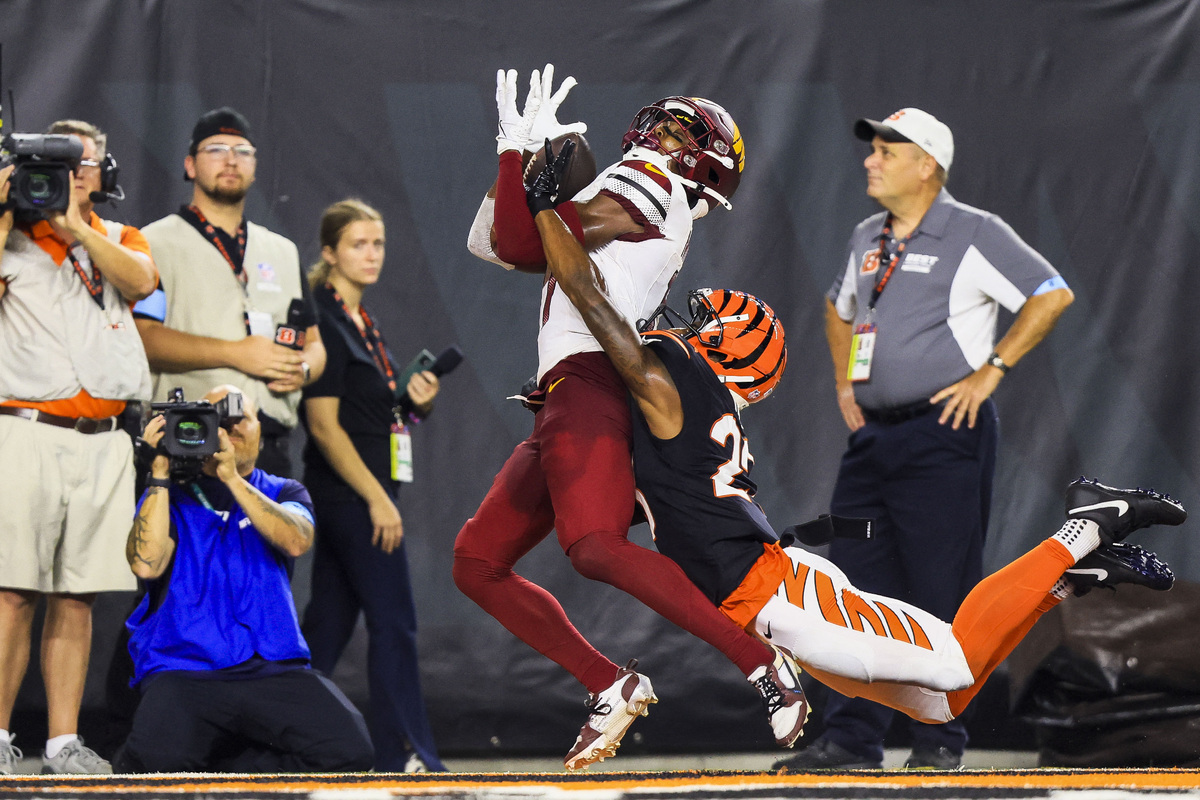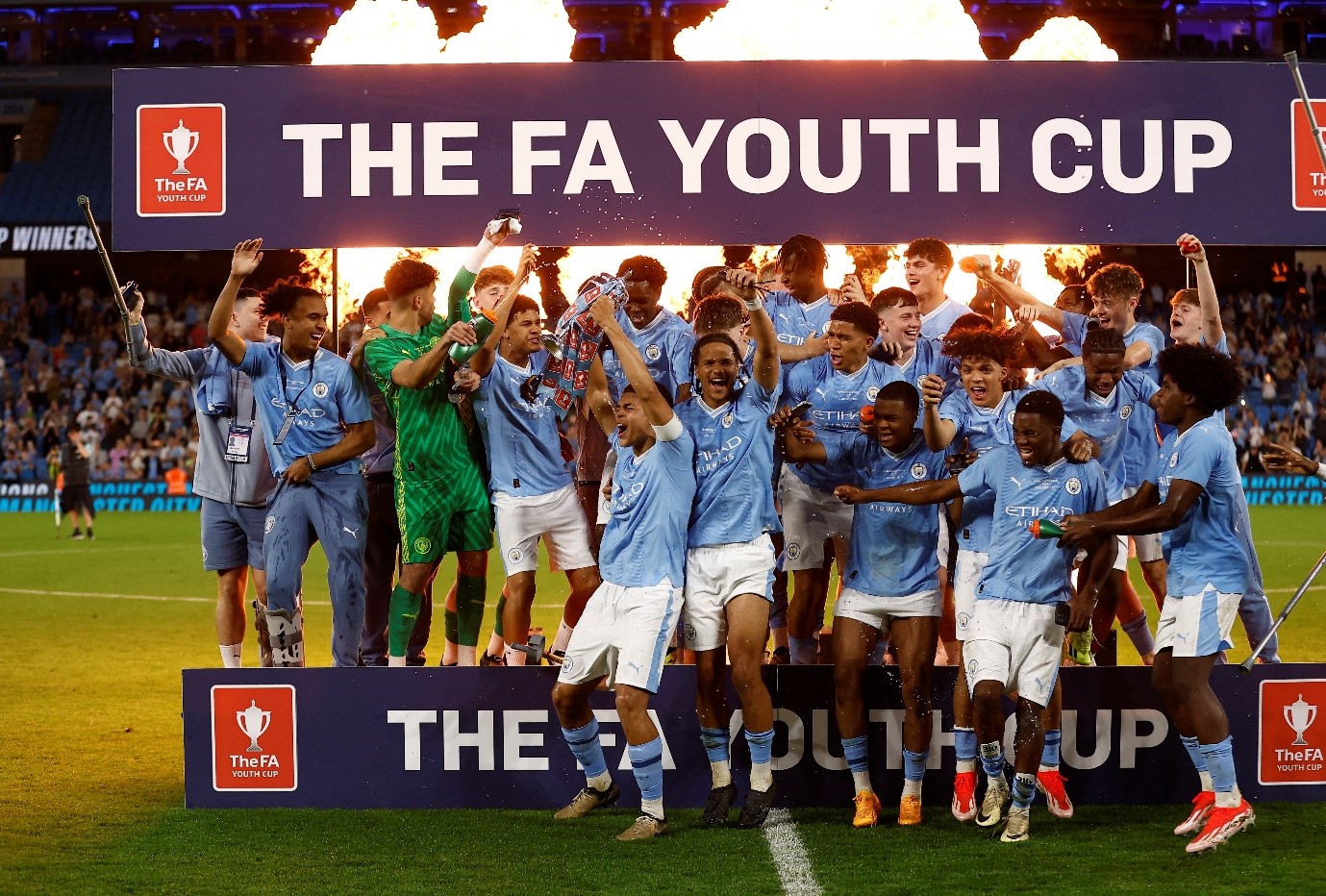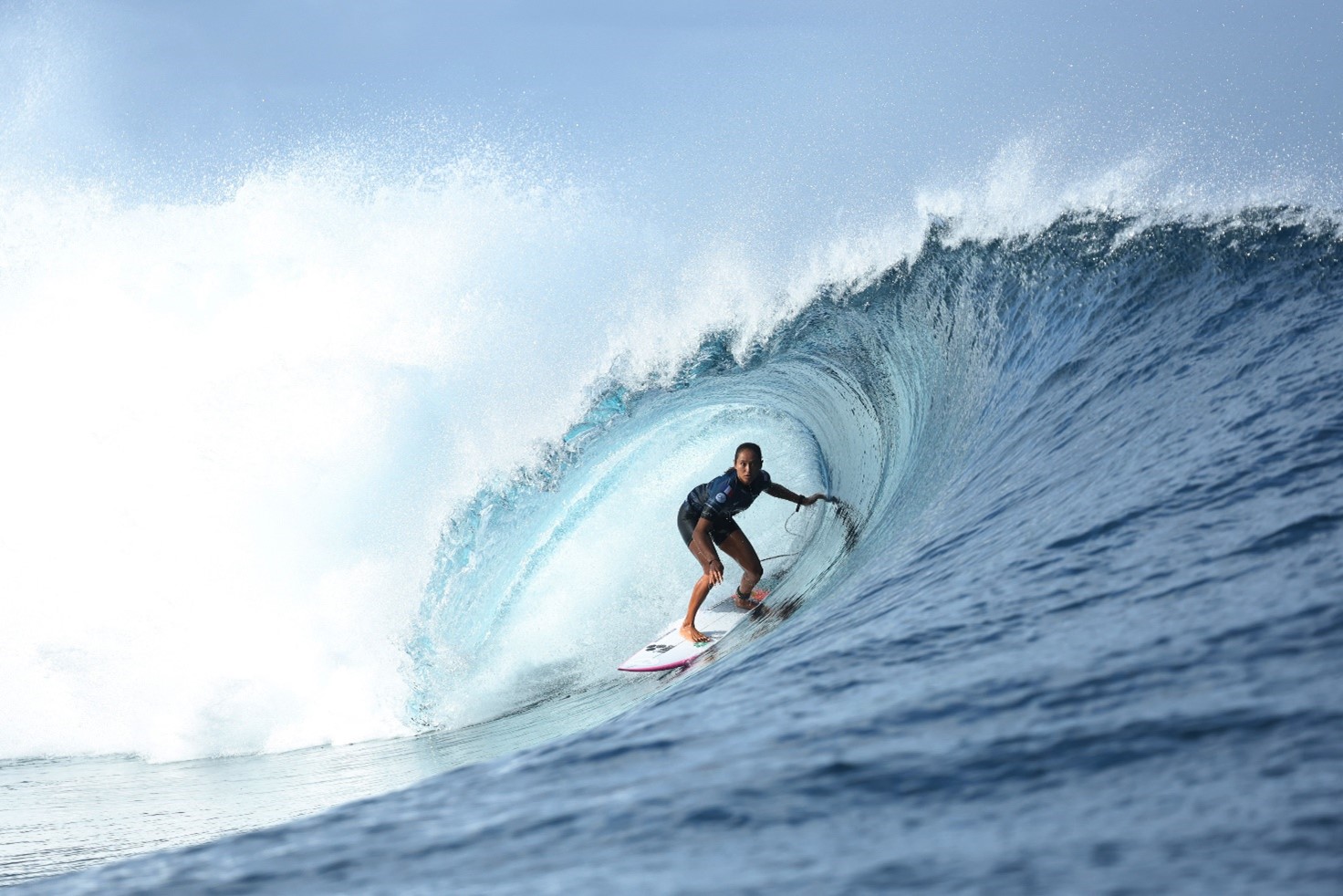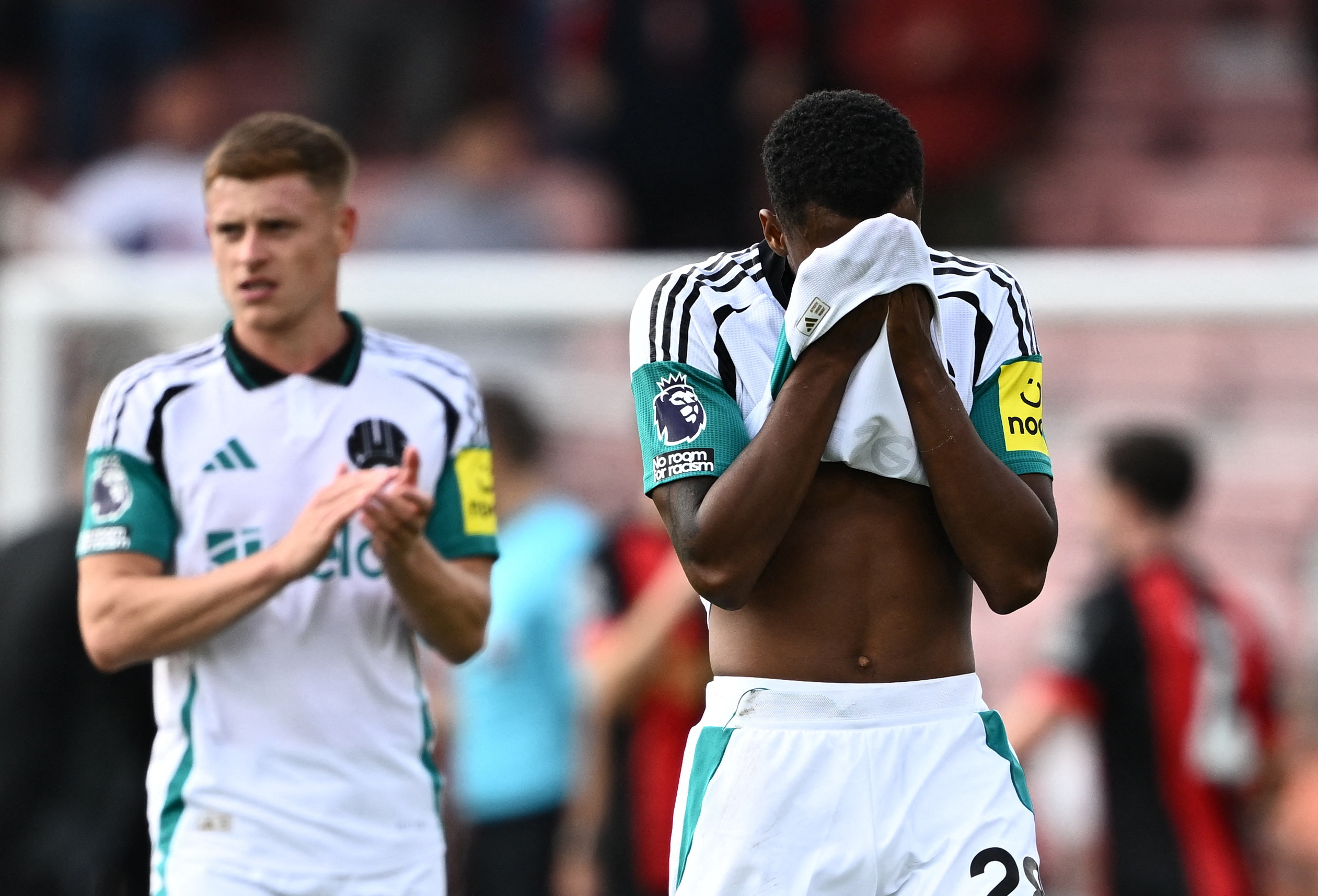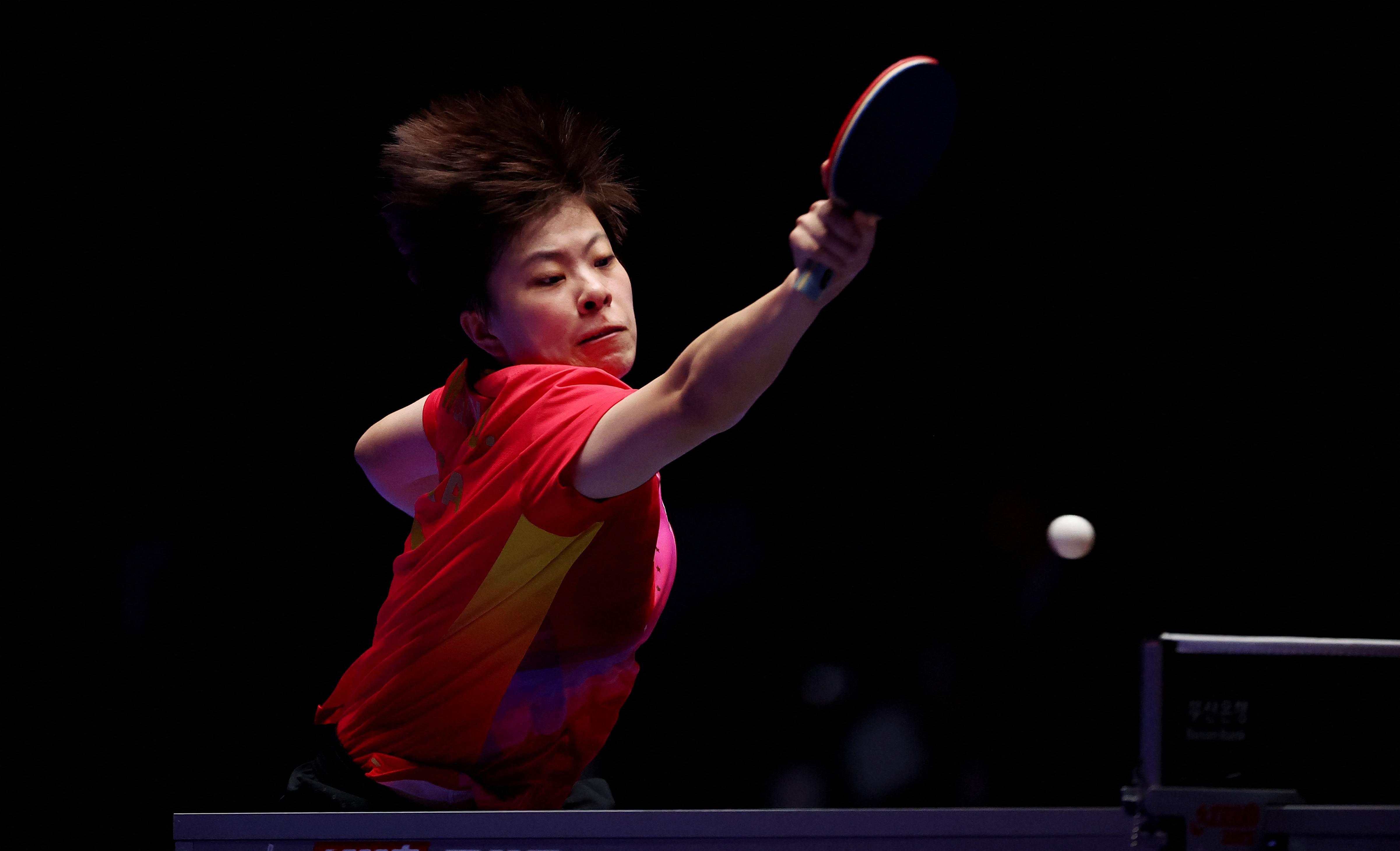You are viewing 1 of your 1 free articles
Are Injuries Contagious? Unmasking Injury Impact on Collective Resilience
Injury contagion is the emotional impact that extends beyond the injured individual to affect teammates. Carl Bescoby emphasizes the importance of understanding injury contagion for clinicians to optimize team performance and reduce collective injuries.
Soccer Football - UEFA Women’s Nations League - Third Place - Netherlands v Germany - Netherlands’ Caitlin Dijkstra reacts after sustaining an injury REUTERS/Piroschka Van De Wouw
Injury contagion is the collective impact beyond those who sustain an injury. It is rooted in emotional contagion theory and highlights the psychosocial reactions within athletic teams when a member sustains an injury. As a phenomenon, it transcends mere empathetic responses, extending to a collective experience that permeates team dynamics. Witnessing a teammate’s injury triggers an emotional impact in athletes, influencing their susceptibility to experiencing negative emotions like fear and anxiety. The collective psychological burden impacts the well-being of athletes and challenges their performance and injury susceptibility. Although the psychological toll of injury is widely acknowledged individually, the collective impact requires more attention. To create targeted interventions to prevent the psychological impact, clinicians must understand the origins of injury contagion.
What is Injury Contagion?
Injury contagion is a concept whereby an injury in a team member would cause an emotional response such as fear or anxiety in the other team members(1,2). Clinicians typically view it through the lens of the psychosocial transmission of negative reactions to sports-related injuries among athletes. Injury contagion is based on the emotional contagion theory, whereby individuals possess the ability, consciously or unconsciously, to influence the emotions of others through both verbal and nonverbal means(3). Nonverbal cues include touch, body language, facial expressions, speech patterns, and vocal tones. A key component of emotional contagion lies in the mechanism of imitation. Observing someone expressing an emotion triggers a tendency to mirror that expression, subsequently inducing a parallel emotional experience(4). This phenomenon is akin to a ripple effect in which one person’s emotions influence the emotional states of those around them(5,6). Therefore, injuries may affect individuals beyond those that get injured, where they produce negative emotions such as fear or anxiety. These emotional states can then transfer to other members within a team, increasing their susceptibility to injury while also impacting overall team performance.
The Collective Psychological Impact
The collective experience of injuries exerts a significant psychological toll on individuals and teams. A complex interplay of cognitive and emotional responses unfolds when athletes undergo injuries as a group. The shared adversity creates a heightened sense of vulnerability, triggering cognitive processes that magnify the perceived threat(6). This collective psychological distress can manifest in various ways, encompassing heightened anxiety, diminished mood, and alterations in team dynamics. The cognitive processes involved in injury contagion extend beyond mere empathy, involving intricate, imaginative mechanisms.
Athletes, witnessing the injuries of their peers, engage in mental simulations that intensify their injury and experience emotional connection. This heightened emotional resonance can contribute to a pervasive sense of distress within the team(6). Moreover, the collective psychological toll is intricately linked to the social fabric of the team. Athletes often engage in social comparison, evaluating their performance and worth against their injured teammates. This comparison intensifies when one of their peers is injured, as it potentially challenges their identity and influences the overall team dynamics.
The collective response underscores the necessity of targeted interventions to address an individual athlete’s psychological well-being and the cohesive mental health of the entire team in the aftermath of shared sporting adversities.
The Ripple Effect
Emotional contagion can lead to subtle but important ripple effects in groups through its direct and indirect influence on team emotions, judgments, and behaviors(4). Team performance relies on the optimal psychological states of the individual members. Several psychological mechanisms, including empathy, social comparison, and athlete identity, may contribute to performance decrements and adverse effects of injury within a team.
- Empathy is pivotal in the contagion effect(7). Athletes, driven by their ability to understand and share the feelings of their injured peers, can undergo imaginative processes that intensify their emotional connection to the injury experience. This heightened empathy can lead to an increased susceptibility to psychological distress, affecting their mental state(7,8).
- Athletes frequently use social comparison, evaluating their performance against their teammates. When a fellow athlete succumbs to injury, this process can then intensify. The injured athlete becomes a focal point for social comparison, potentially altering the perceptions of their abilities and contributions. Consequently, this may challenge the core of their athlete identity(9).
Recognizing the Contagion Shift
Identifying injury contagion involves keen observation of athletes’ behaviors. Heightened anxiety, mood changes, and alterations in training intensity may signify a psychological response to the perceived threat(8). Clinicians must remain vigilant to these observable cues, providing timely support. Furthermore, injury contagion can manifest in shifts within team dynamics. Increased tension, communication breakdowns, or altered group cohesion may indicate the psychological impact of injury spread. Recognizing these changes is crucial for implementing targeted interventions, mitigating the potential ripple effect on the entire team’s mental well-being(8).
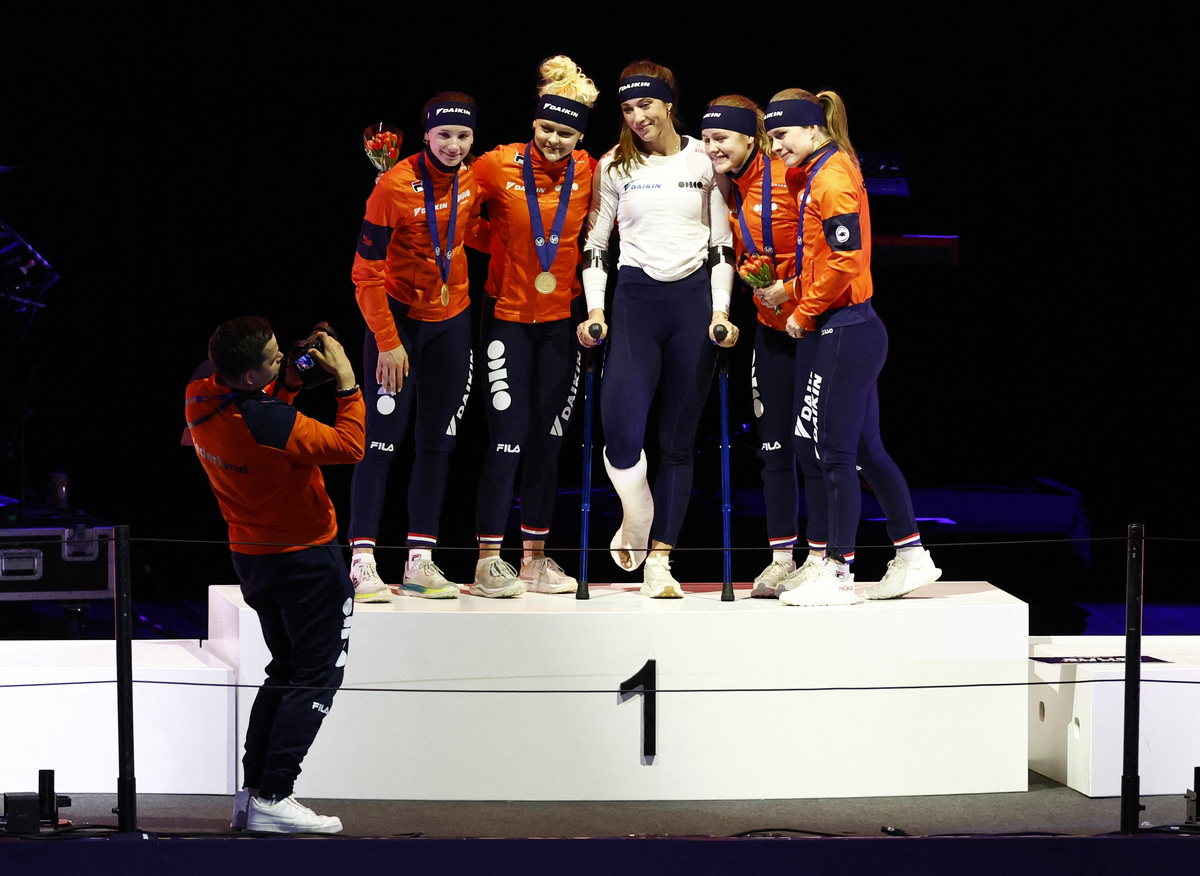
Managing Injury Contagion
There are psychological and emotional strategies for clinicians to support teams with collective injury management. Along with recognizing the signs in athletes and changing dynamics in teams, clinicians can reduce the impact through early intervention and preemptive approaches that offer tangible and realistic strategies to mitigate the collective effect of often uncontrollable and expected injuries(9).
1. Early intervention
Early intervention is paramount in effectively managing injury contagion. Clinicians must proactively identify individuals at risk of succumbing to the psychological impacts of injury. Early signs such as changes in behavior, mood, or performance warrant attention. Implementing regular mental health assessments or check-ins can aid in early identification. This proactive approach enables timely intervention, preventing the escalation of psychological distress and mitigating the spread of negative emotions within the team.
2. Preemptive mental conditioning
Although early identification and prevention may be the gold standard strategy, it may not be feasible or achievable. This is especially pertinent in sports, where injuries are a largely accepted eventuality for most athletes. Therefore, preemptive strategies may better equip athletes with mental conditioning, such as acceptance work. Implementing acceptance as a foundational element of mental conditioning involves fostering a mindset that acknowledges and embraces the realities of injuries. Clinicians can guide athletes in accepting the inherent risks of their sport and understanding that setbacks are a natural part of the athletic journey. By accepting distressing thoughts and emotions without judgment, athletes can enhance their resilience, fostering mental well-being during challenging times. This approach sets the stage for a more psychologically resilient team.
3. Team-wide psychoeducation sessions
Team-wide psychoeducation sessions raise awareness about the psychological dynamics surrounding injury contagion. Athletes, coaches, and support staff may gain insights into recognizing and addressing signs early on, fostering a collective understanding and contributing to a supportive team culture. Clinicians must consider psychoeducation as a viable approach that is both cost-effective and easy to implement. Team-wide discussions on injury contagion offer opportunities to facilitate open dialogues on coping strategies within the team environment. Thus creating a space for athletes to share experiences and coping mechanisms. Encouraging transparent communication enables the exchange of effective strategies, enhancing the team’s collective resilience.
4. Integrating comprehensive support systems
Coaches and clinicians should establish comprehensive support systems prioritizing mental well-being and physical recovery. This involves creating an environment where athletes feel comfortable expressing their emotions and concerns when experiencing injury or witnessing others experiencing injury. Regular communication channels should be established to facilitate open dialogue about the psychological aspects of injuries. By doing this, coaches and clinicians can provide the right support, helping athletes cope better with psychological challenges. Furthermore, integrating comprehensive support systems also ensures that athletes can access mental health professionals, such as injury psychologists, who specialize in supporting athletes through injury and recovery. These professionals can provide personalized support and interventions tailored to each athlete’s needs.
Conclusion
Injury contagion represents a multifaceted phenomenon with far-reaching implications for individual athletes and teams. The collective experience of injuries exerts a significant psychological toll, triggering a complex interplay of cognitive and emotional responses that can manifest in heightened anxiety, altered mood, and shifts in team performance and injury susceptibility. Recognizing the signs of injury contagion and implementing early interventions are crucial steps for clinicians to mitigate its impact. Pre-emptive mental conditioning, team-wide psychoeducation sessions, and comprehensive support systems are practical strategies that can foster resilience and promote psychological well-being within teams facing the challenges of injury contagion. By addressing the collective psychological burden of injuries, clinicians can support athletes in navigating adversity and optimizing their performance and well-being.
References
1. Injury Contagion. Boston University, 2005
2. J of Clin Sport Psych. 2008, 2(3), 278–292
3. Emotional Contagion. 1994, New York
4. Org Behavior. 2001, 86(1), 99-130
5. Org Behavior. 2000, 1-68
6. J of Man Research. 2019, 19(4), 250-266
7. The Social Neurosci of Empathy. 2011, 19
8. Perspectives from Psych, Phil, and Socio. 2014, 108-122
9. Personality and Social Psych Bulletin. 1991, 17(2), 166-174
Newsletter Sign Up
Subscriber Testimonials
Dr. Alexandra Fandetti-Robin, Back & Body Chiropractic
Elspeth Cowell MSCh DpodM SRCh HCPC reg
William Hunter, Nuffield Health
Newsletter Sign Up
Coaches Testimonials
Dr. Alexandra Fandetti-Robin, Back & Body Chiropractic
Elspeth Cowell MSCh DpodM SRCh HCPC reg
William Hunter, Nuffield Health
Be at the leading edge of sports injury management
Our international team of qualified experts (see above) spend hours poring over scores of technical journals and medical papers that even the most interested professionals don't have time to read.
For 17 years, we've helped hard-working physiotherapists and sports professionals like you, overwhelmed by the vast amount of new research, bring science to their treatment. Sports Injury Bulletin is the ideal resource for practitioners too busy to cull through all the monthly journals to find meaningful and applicable studies.
*includes 3 coaching manuals
Get Inspired
All the latest techniques and approaches
Sports Injury Bulletin brings together a worldwide panel of experts – including physiotherapists, doctors, researchers and sports scientists. Together we deliver everything you need to help your clients avoid – or recover as quickly as possible from – injuries.
We strip away the scientific jargon and deliver you easy-to-follow training exercises, nutrition tips, psychological strategies and recovery programmes and exercises in plain English.
